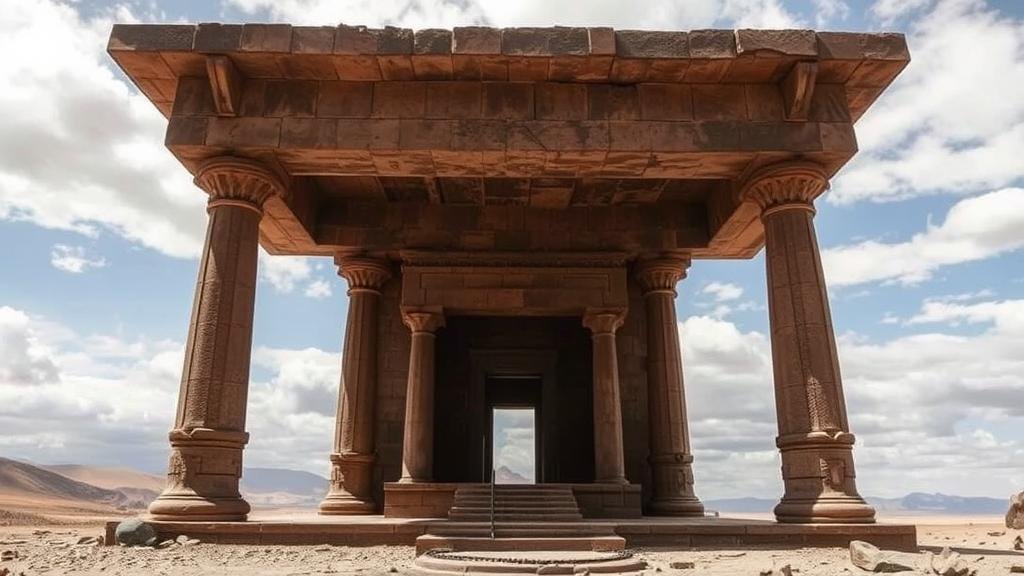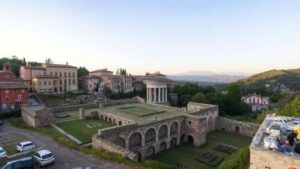Investigating the “Eternal Temple,†a rumored sanctuary aligned with every solar solstice.
Investigating the “Eternal Templeâ€: A Sanctuary of Solar Alignment
The concept of the “Eternal Temple†has long been surrounded by mystery and intrigue, primarily due to its rumored alignment with the solar solstices. This article aims to dissect the historical origins, potential locations, and the significance of the temple, exploring its profound connection to ancient solar worship and astronomical alignments.
Historical Context of Solar Worship
Throughout history, various civilizations have revered the sun as a powerful deity. The significance of the solstices–marked by the longest and shortest days of the year–was monumental, symbolizing rebirth, renewal, and the cyclical nature of life. Cultures such as the Ancient Egyptians, Mayans, and Stonehenge architects demonstrated advanced astronomical knowledge by constructing sacred sites aligned with solar events.
For example, Stonehenge, located in Wiltshire, England, is famously aligned with the sunrise of the summer solstice and the sunset of the winter solstice. Archaeological evidence suggests this alignment played a crucial role in the spiritual and agricultural practices of the people who built it. Similar practices were observed at the Great Temple of Abu Simbel in Egypt, which also aligns with the winter solstice, illuminating the inner sanctum of the temple.
Visualizing the Eternal Temple
The “Eternal Temple†is often described as a sanctuary where light and shadow perform a dance during the solstices. Its existence remains unconfirmed, fueling a myriad of theories regarding its location and purpose. Some speculate that this temple could be hidden within the historical landscapes of Ancient Egypt, while others suggest it might be similar to lost temples in Central America or even in the British Isles.
- Potential locations include:
- Undiscovered sites in the Egyptian desert.
- Ancient Mayan ruins aligned with solar events.
- Significant astronomical features that indicate solar alignment.
Solar Solstices: A Deeper Dive
Each solar solstice, occurring on June 21 and December 21, possesses distinctive characteristics. The summer solstice is the longest day of the year, while the winter solstice is the shortest. e dates have gravitational significance in many cultures, influencing agricultural cycles and religious practices. For example, the summer solstice is often celebrated with festivals acknowledging fertility and growth, while the winter solstice typically heralds the return of light and the promise of renewal.
Modern-Day Research and Implications
In contemporary times, researchers and archaeologists continue to investigate the possibility of the “Eternal Temple.†Technological advancements in aerial photography, LiDAR (Light Detection and Ranging), and ground-penetrating radar have led to the discovery of potential temple sites that align with solar phenomena.
For example, a team led by archaeologist Dr. Thomas H. von der Dunk published findings that suggest the presence of an ancient structure near Teotihuacan, Mexico, which could serve similar purposes as the hypothesized “Eternal Temple.†Their analysis revealed an unusual number of structures aligned with key solar events.
Connecting the Past with Modern-Day Practices
Understanding the “Eternal Temple†offers valuable insights not only into ancient civilizations astronomical sophistication but also into how current cultures can respect and celebrate solar events. Modern-day practitioners of various spiritual and religious traditions still mark solstice events, practicing rituals that echo those of ancient peoples.
- Examples of contemporary celebrations:
- Summer solstice festivals in Sweden and other Scandinavian countries.
- Winter solstice ceremonies held by various indigenous cultures worldwide.
Actionable Takeaways
Investigation into the “Eternal Temple†can enrich our understanding of cultural heritage and ecological wisdom. Here are a few steps individuals can take to engage with this fascinating topic:
- Explore local historical sites aligned with solar events.
- Participate in solstice celebrations that promote community engagement and environmental awareness.
- Continue learning about ancient civilizations and their astronomical practices to appreciate their enduring legacies.
In summary, while the “Eternal Temple†may still exist only as a tantalizing rumor, the search for such a sanctuary reveals a deep-rooted connection between humanity and the cosmos, reminding us of the enduring significance of sunlight in our lives.



